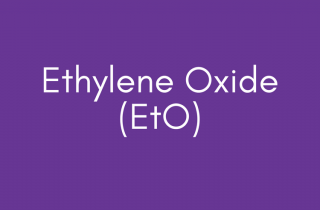Fragrance
At a Glance
Fragrance or ‘parfum’ can consist of any of approximately 4,000 chemicals used by the fragrance industry to formulate scents for use in personal care products, cleaning products, perfumes, and home care products. Many fragrance chemicals are linked to cancer, birth defects, hormone disruption, and other chronic health problems.
What is fragrance?
The single word ‘fragrance’ covers dozens, sometimes even hundreds, of chemicals on the product labels of beauty, cleaning, and home care products. Many of these fragrance chemicals are linked to harm to human health.
Perfumers draw from an International Fragrance Association (IFRA) palette of approximately 4,000 fragrance ingredients to create the scents in personal care products, cosmetics, cleaning products and fine fragrances. IFRA estimates these 4,000 ingredients are used by 900 expert perfumers to create the 60,000 to 80,000 unique proprietary fragrance blends made up of between 50 and 250 ingredients that they create each year.[1]
Where are fragrances found?
Fragrances scent consumer and industrial goods including hair care products, lotions, baby products, floor cleaners, make-up, food products, air fresheners, and fine fragrances. Even “unscented” products may contain fragrance chemicals to mask naturally occurring odors.
Given the current lack of federal or state mandates for fragrance ingredient disclosure, identifying fragrance chemicals in products requires laboratory testing. In BCPP’s 2018 report, Right to Know: Exposing Toxic Fragrance Chemicals in Beauty, Personal Care, and Cleaning Products, a total of 338 fragrance chemicals were found in the 25 personal care products tested.[2] 99 of those chemicals had links to at least one health concern, and several were linked to multiple health effects.
In fact, in the personal care products we tested, fragrance chemicals accounted for ¾ of the chemicals we detected linked to chronic health effects.
What evidence links fragrance to breast cancer?
- IFRA’s 2011 published list of 4,000 possible fragrance ingredients used to formulate fine fragrances, fragranced cosmetics and personal care products includes chemicals listed as carcinogens by California’s Prop. 65 Program and the National Toxicology Program (NTP) such as benzophenone, methyleugenol and styrene.[3]
- BCPP’s Right to Know report test of 100 personal care products and 40 cleaning products revealed the possible carcinogens beta-myrcene, benzophenone, and DEHP and endocrine disrupting compounds including DEP, oxybenzone, octinoxate and galaxolide.
What about “natural” fragrance and essential oils?
- “Natural” does not mean safe. There can be constituents of natural fragrances that have harmful health effects including endocrine disruptors, carcinogens and allergens. It is important that companies look for safer alternatives where available and report all ingredients in their fragrances, both natural and synthetic, so that consumers are able to avoid potential allergic reactions and other health consequences.
- Essential oils are naturally occurring complex mixtures which are highly variable in their chemical composition dependent on their geographic origin, extraction method, season of harvest and many other biological conditions. Some of the naturally-occurring constituents can be allergens or sensitizers, carcinogens or endocrine disrupting chemicals or have other negative health effects.[4],[5]. However, many of the constituents have been shown to have positive health effects, including antioxidant, antimicrobial and antitumor activities.[6] Many essential oils have not been tested thoroughly for safety, though most have been used for centuries by communities around the world.
- There is evidence that the use of products containing lavender and tea tree oil on young boys can result in gynecomastia (growth of breast tissue).[7] No effects on breast development have been seen in women or young girls.[8]
- Dilution of essential oils reduces their endocrine disrupting effects.[9]
Who is most likely to be exposed to fragrance?
Women who work in beauty, cleaning, and home care industries are likely to be exposed, as well as consumers who use home and beauty care products containing fragrance.
Who is most vulnerable to the health effects?
Children, women of color, custodians, domestic workers and cosmetologists are most vulnerable and highly exposed. Without full ingredient disclosure, these populations have no way to avoid chemicals of concern.
What are the top tips to avoid exposure?
- Choose fragrance-free products or products from companies who have publicly committed to full fragrance ingredient disclosure.
- Read labels to avoid products that contain ‘fragrance’ or ‘parfum.’
- Wear appropriate personal protective equipment when working with fragranced products, such as personal care products, cleaning products, perfumes, and home care products.
- Never use undiluted essential oils directly on the skin.
- Avoid the use of lavender or tea tree oil on young boys.
[2] Breast Cancer Prevention Partners. “Right to Know: Exposing Toxic Fragrance Chemicals in Beauty, Personal Care, and Cleaning Products. Breast Cancer Prevention Partners.” Last modified September 2018. https://www.bcpp.org/wp-content/uploads/2018/09/BCPP_Right-To-Know-Report_Secret-Toxic-Fragrance-Ingredients_9_26_2018.pdf.
[3] International Fragrance Association. “IFRA Transparency List.” Accessed November 4, 2020. https://ifrafragrance.org/initiatives/transparency/ifra-transparency-list.
[4] Nematollahi, Neda, Spas D. Kolev and Anne Steinemann. “Volatile chemical emissions from essential oils.” Air Quality Atmosphere and Health 11, 8 (2018): 949–54. doi:10.1007/s11869-018-0606-0.
[5] National Institute of Environmental Health Sciences. “Essential Oils.” Last updated April 15, 2020. https://www.niehs.nih.gov/health/topics/agents/essential-oils/index.cfm.
[6] Dosoky, Noura S, and William N Setzer. “Chemical Composition and Biological Activities of Essential Oils of Curcuma Species.” Nutrients 10, 9 (2018): 1196. doi:10.3390/nu10091196.
[7] Henley, Derek V et al. “Prepubertal gynecomastia linked to lavender and tea tree oils.” The New England Journal of Medicine 356, 5 (2007): 479-85. doi:10.1056/NEJMoa064725.
[8] National Institute of Environmental Health Sciences. “Essential Oils.” Last updated April 15, 2020. https://www.niehs.nih.gov/health/topics/agents/essential-oils/index.cfm.
[9] National Institute of Environmental Health Sciences. “Essential Oils.” Last updated April 15, 2020. https://www.niehs.nih.gov/health/topics/agents/essential-oils/index.cfm.






